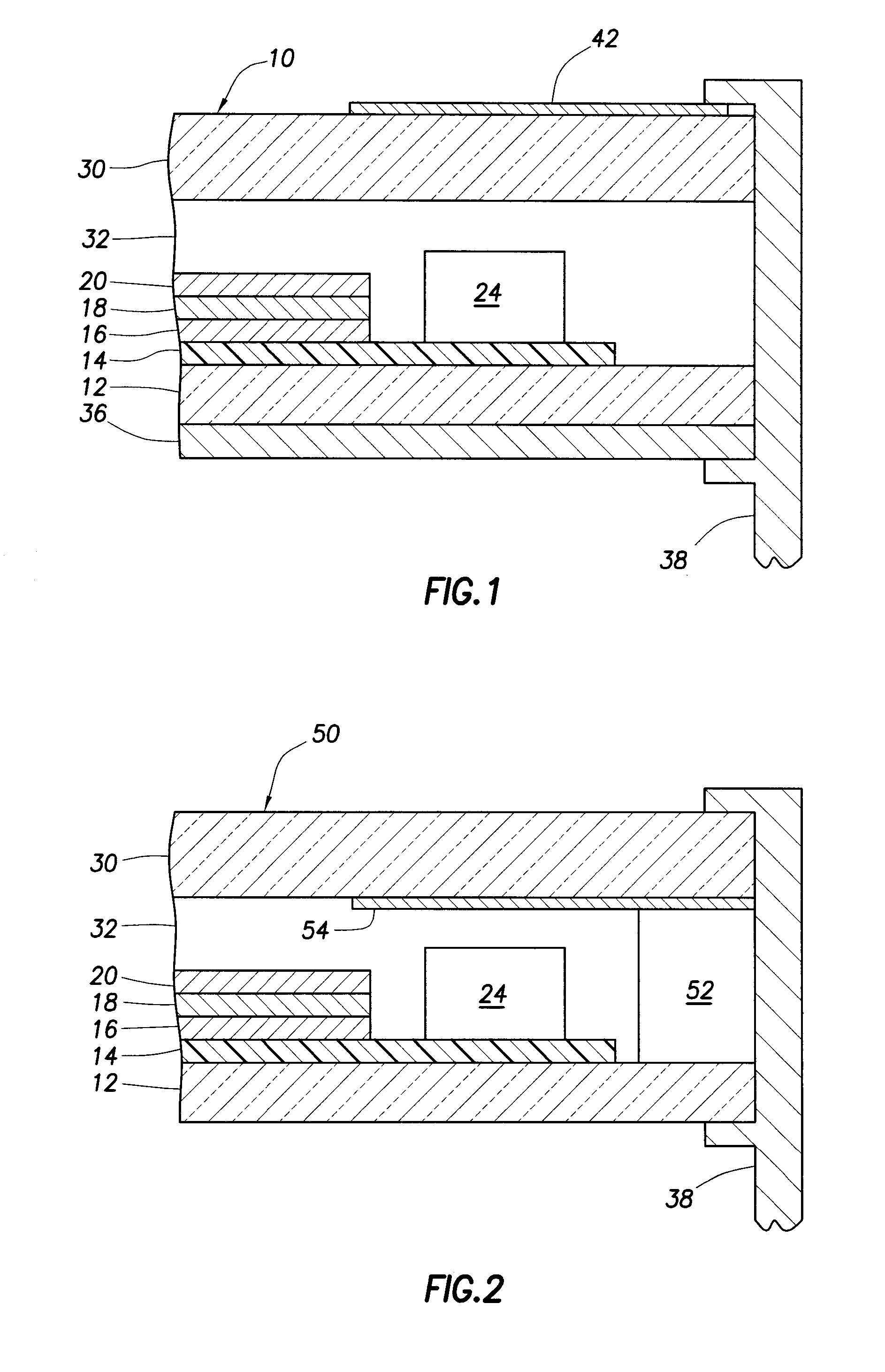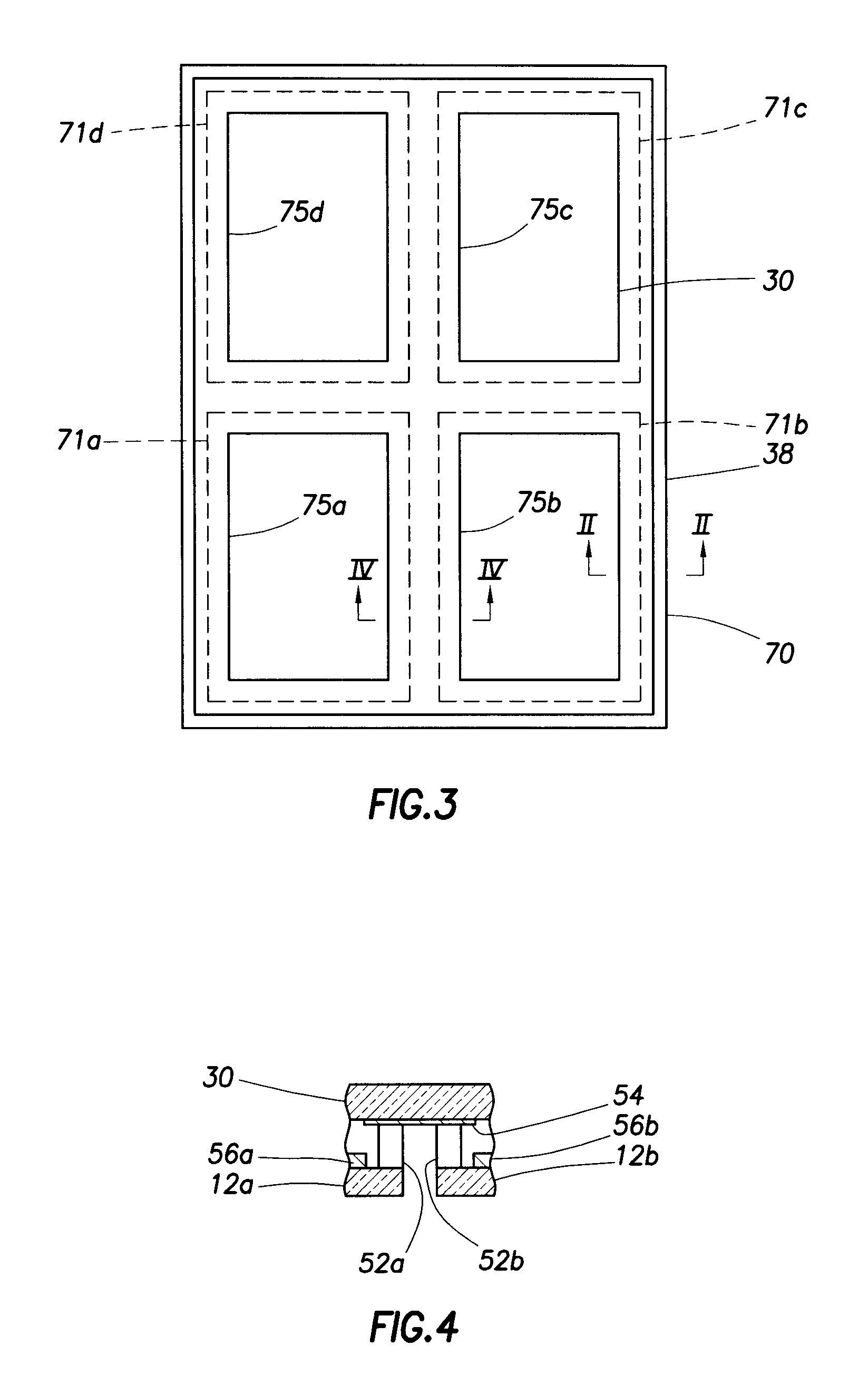Photovoltaic device and method for encapsulating
a photovoltaic device and photovoltaic technology, applied in the direction of semiconductor devices, basic electric elements, electrical apparatus, etc., can solve the problems of macroscopic cracking of the substrate, thermal stress, thermal stress,
- Summary
- Abstract
- Description
- Claims
- Application Information
AI Technical Summary
Benefits of technology
Problems solved by technology
Method used
Image
Examples
second embodiment
[0048]Reference is now made to FIG. 2, showing a photovoltaic device 50 according to the invention. The devices are largely similar same reference numerals as in FIG. 1 are used to refer to the same or similar parts, and we refer to the discussion thereof above. It is sufficient to discuss the differences with the embodiment of FIG. 1. Along the edges of the photovoltaic device a polymeric sealant material in the form of a tape 52 is arranged. The edge seal may preferably comprise a moisture repellent material and / or a desiccant. Examples of suitable edge seal materials include butyl rubber, urethane and polyurethane materials, polyisobutylene materials, epoxide materials, polysulfamide materials; and cyanoacrylates. Such edge sealants may be applied in the form of a tape or strip prior to bringing the backside layer and the light-facing layer together.
[0049]The protecting layer 36 is not present on the rear side of the substrate.
[0050]The opaque area 54 is arranged as a coating on ...
third embodiment
[0051]Reference is made to FIGS. 3 and 4, showing schematically a photovoltaic device 70 according to the invention, in top view and in a cross-section along line IV-IV. FIG. 3 shows a solar module formed of four solar cells 71a,b,c,d underneath a common cover glass 30 and in a common frame 38. The module is largely similar to the device 50 of FIG. 2, in fact FIG. 2 can be regarded as a cross-section along line II-II. In a module formed of a plurality of solar cells there can however be regions other than the circumference where the invention can be applied. In the cross-section of FIG. 4 it is shown, that opaque area 54 can likewise be arranged in a central part of the photovoltaic device. The solid rectangles 75a,b,c,d in FIG. 3 indicate the transparent area of the cover, and the remaining area of the cover glass that can receive light (such as outside the frame) is suitably all opaque. It shall be clear that FIGS. 3 and 4 are not to scale, the fraction of opaque area is exaggerat...
PUM
 Login to View More
Login to View More Abstract
Description
Claims
Application Information
 Login to View More
Login to View More - R&D
- Intellectual Property
- Life Sciences
- Materials
- Tech Scout
- Unparalleled Data Quality
- Higher Quality Content
- 60% Fewer Hallucinations
Browse by: Latest US Patents, China's latest patents, Technical Efficacy Thesaurus, Application Domain, Technology Topic, Popular Technical Reports.
© 2025 PatSnap. All rights reserved.Legal|Privacy policy|Modern Slavery Act Transparency Statement|Sitemap|About US| Contact US: help@patsnap.com



